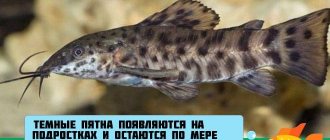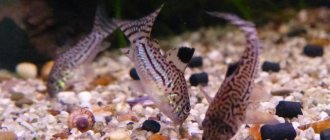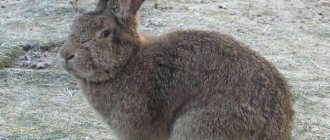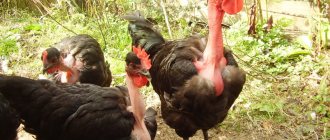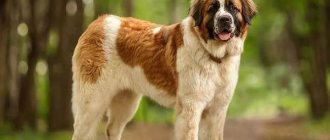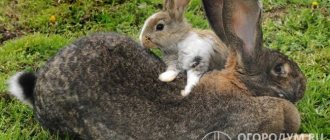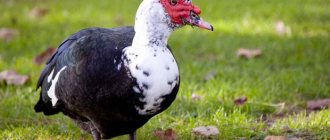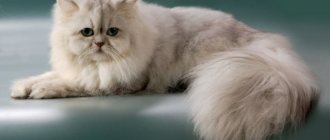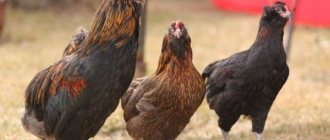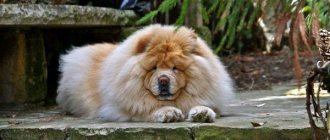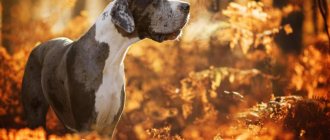author: fisher 01/21/2016 0 Comments
Family: Chain catfish
soms
Otocinclus affinis or common otocinclus is perhaps the smallest representative of the chain catfish family (Loricariidae). Even in nature, their size rarely exceeds 5 cm. Their habitat is limited to water bodies in the southeastern part of Brazil. Typical biotopes are shallow, slow-flowing rivers, lakes and ponds, with clear, clean water, densely overgrown with aquatic vegetation. In the Amazon basin, there are about 20 species of otocinclus, differing in size, color and pattern on the body. They are all suitable for keeping in an aquarium.
Otocinclus affinis
Otocinclus affinis is most often found in amateur aquariums. It has an elongated body, flattened on the abdominal side, covered with wide bony plates. The main body color is silver, with a slight yellowish tint. On the dark gray back there are light stains and small specks of brown. The abdomen is characterized by a yellowish tint. A wide dark stripe runs along the entire body. Transparent fins have a barely noticeable green tint. The eyes of Otocinclus are relatively large, and the mouth is a suction cup characteristic of the entire family.
In an aquarium, Otocinclus affinis reaches a size of 3–4 cm.
Sometimes they rise to the surface of the water and take a breath of air. This is normal behavior. Like most chain-mailed catfish, otocinclus have intestinal respiration, which allows them, with a deficiency of oxygen dissolved in water, to breathe atmospheric air.
Sexual dimorphism in the species is weakly expressed. But if you look closely, females can still be distinguished; they are somewhat larger and plumper than males.
Otocinclus spend most of their time on the wide leaves of plants, cleaning them from algae and microorganisms living on them.
Despite its modest size, this fish, hardly noticeable in the aquarium, is, along with the Siamese algae eater, one of the most effective algae eaters.
Otocinclus affinis is the most common inhabitant in all types of planted aquariums. This species is highly recommended for keeping in natural aquariums by Takashi Amano. They are much more mobile than ancistrus and, unlike them, they clean not only hard surfaces, but also plant leaves from algae.
Compared to other species, otocinclus more effectively fight algal growth, and they do this almost around the clock, without damaging even the most delicate plant leaves. Due to this feature and small size, many aquarists prefer otocinclus over Siamese algae eaters.
Otocinclus affinis cleans well the leaves of even such miniature plants as Echinodorus tenellus and Saggitaria subulata. Prevents and clears red algae from Anubias. In two days, a flock of otocinclus can completely clear an aquarium of brown diatoms (brown algae).
Range and Habitat
Otocinclus affinis distribution sites.
South America: Amazon basin, endemic to Brazil. Inhabits the rivers of the state of Rio de Janeiro.
Otocinclus affinis habitats.
They live in very clean, clear water with a high oxygen content and fast current, mainly in shallow water. Forms small shoals. Most of the time is spent on snags and plant leaves from which they eat algae and microorganisms living in them.
Diseases
Unfortunately, due to violation of conditions (exceeding the level of nitrates, nitrogen, low oxygen content), otocinclus can become seriously poisoned, including death .
In addition, parasites can appear in dirty water , which affect all inhabitants of the aquarium, not just catfish. Fish should be treated with special anti-parasitic drugs according to the instructions.
Otocinclus is a beautiful fish that is interesting to watch, and its contribution to the hygiene of the reservoir is truly great.
Description
The color is ocher-golden, from the beginning of the snout through the eye, along the lateral line to the caudal fin inclusive there is a black wide stripe. On the caudal peduncle, the stripe turns into a rounded spot, often divided into two parts. Belly white
Otocinclus affinis appearance.
The head is moderate in size, the snout is elongated and rounded. The eyes are big. There are large “ear” holes on the sides. The mouth is a kind of suction cup. The body is elongated, slender, tapering towards the caudal peduncle. The body is covered with small bone plates. The dorsal fin is high, oblong, with one hard ray. The pectoral and ventral fins are small and colorless. There is no adipose fin, the caudal fin is wide.
Close-up of Otocinclus sp.
Otocinclus sp. close-up, sucker.
Size:
The smallest catfish are from the Loricarid family, about 5 cm long.
Types of otocinclus
There are numerous species of Otocinclus catfish. Let's look at some of them, the most popular among aquarists:
Otocinclus affinis Common Otocinclus is golden in color with a black stripe along the body and dark spots, reaching a length of 6 centimeters.
Otocinclus arnoldi Easily confused with the common one, characterized by more pronounced spots.
Otocinclus batmani Having an elongated yellow body with pronounced brown spots.
Otocinclus bororo Characterized by a pale coloration with a distinct longitudinal black stripe.
Otocinclus caxarari With a dark stripe against the lemon-yellow color of the rest of the body.
Otocinclus cocama Zebra-shaped, usually up to 4.5 centimeters long.
Otocinclus flexilis Otocinclus speckled - having a more pronounced spotted structure than all other representatives of the genus.
Otocinclus hasemani With a body colored in grayish shades, with a darker longitudinal line characteristic of most otocinclus.
Otocinclus hoppei With a high dorsal fin and a diamond-shaped spot near the tail.
Otocinclus huaorani With a contrasting arrangement of bright dark spots on an almost white body.
Otocinclus macrospilus Five centimeter - with patterned spots along the entire back.
Otocinclus mariae Maria - completely covered with spots on top.
Otocinclus mimulus With a light brown back and yellowish belly.
Otocinclus mura Solid dark on top.
Otocinclus tapirape C has a characteristically convex back, usually not reaching 3 centimeters in length.
Otocinclus vestitus With a longitudinal pattern over a dark stripe.
Otocinclus xakriaba With interrupted lateral stripe.
Otocinclus negros Completely dark.
Otocinclus mangaba With serrated pectoral fins and a pale belly.
Otocinclus juruenae With transverse stripes concentrated on the back near the tail.
Behavior and Compatibility
In good conditions the fish is very strong and hardy.
Otocinclus affinis group in an aquarium.
It is better to keep in groups of 5 or more individuals. Bright light does not bother them, so you can create conditions in the aquarium for good plant growth. They often gather in areas of fast flowing water. It is necessary to place a grill on the suction tube of the filter so that they do not get sucked in. Sometimes they swim to the surface of the water and take a breath of air - this is normal behavior.
Otocinclus sp. in an aquarium with plants 1.
Cichlids chase otikas trying to eat. They can be kept with other peaceful, medium-sized fish without fear.
Otocinclus sp. in an aquarium with plants 2.
This small, unnoticeable fish in a planted aquarium is one of the most effective algae eaters. Otocinclus, together with the shrimp Caridina multidentata, is present in almost all T. Amano aquariums. They are much more mobile than ancistrus and, unlike the latter, eat algae from plant leaves. Compared to any other fish, they are the most effective in the fight against algae, and they search for them almost around the clock and do not damage even the most delicate plant leaves. The leaves of small plants such as E. tennelus and Saggitaria subulata, and even the moss Vesicularia dubiana, are very good at cleaning. Prevents the appearance of red algae on Anubias. In a couple of days, a group of otocinclus completely destroys brown diatoms (brown algae) in the aquarium: “Brown algae appear in a young aquarium. They cover everything from walls to driftwood and plants like a curtain. They can be easily controlled by adding their natural enemies to the aquarium, the best of which is Otocinclus.” (Takashi Amano, "Nature Aquarium World", TFH Publications)
Planting rate of Otocinclus sp. in Nature Aquarium: for every 100 liters of volume there are about 20 fish when starting the aquarium, and 2-3 fish after stabilizing the ecosystem, for example, T. Amano has from 4 to 6 Oto in a 90 cm aquarium.
Do not place in an aquarium with SAE (other algae eaters) to avoid creating food competition!
Aquarium
The minimum size of the aquarium is 60 cm.
Ideal conditions are a stable, healthy aquarium, densely planted. Snags and stones, secluded corners among plants. Oxygen-rich water with little movement. A lot of food is soft algal fouling.
Otocinclus sp. on the glass of an aquarium.
The water should not contain large amounts of organic contaminants. Filtration must be complete and high quality. The water quality must be high: ammonium is not detected, nitrite is 0, nitrates are less than 10 mg/l.
Water parameters:
Temperature: 21 - 27° C pH: 6.0 - 8.0 Hardness: from 5 to 19° dH
Weekly change of 30-50% water.
If the water quality is poor, they die from massive bacterial damage.
Content
- 1 Description
- 2 Conditions of detention
- 3 Behavior
- 4 Food
- 5 Reproduction
Otocinclus vulgaris
- Other names: Otocinclus simplex, Otocinclus vulgaris, Oto, Common algae eater, Macrotocinclus affinis.
- Origin: tropical rivers and lakes of South America (Venezuela, Argentina, Peru, Brazil).
- Size: from 2 to 5 cm.
- Temperature: 22-28 °C °C.
- Water parameters: pH water hardness from 2 to 18 GH, acidity 7 pH.
- Lighting: bright.
- Behavior: peaceful, gregarious, hardworking.
- Additional information: occupy the lower, bottom level of the aquarium.
- Content difficulty: medium.
Acclimatization
Quarantine treatment using water acidified with peat and methylene blue to increase the antibacterial effect.
Otocinclus sp. acclimatization, quarantine.
It is often said that wild-caught specimens die in the aquarium within the first few weeks. You should adhere to certain rules for adaptation to the aquarium. The main thing is not to immediately place Otocinclus in a large aquarium with plants. This is especially important if the aquarium is “large” (water surface area more than 1 sq.m.).
It is better to use the following recommendations:
Use a small aquarium of 30-60 liters without soil, using simple fish (guppies, platies, etc.). Install two airlift sponge filters. This filtration method was chosen for several reasons: it is the best option for an aquarium without soil, good oxygenation of the water does not create a strong current, and because otiki like to eat sponges as well as the walls of the aquarium. The optimal temperature is 25-26 degrees.
Place 6-10 fish in this aquarium. Feed with flakes, some bloodworms and spirulina. Do not feed fresh vegetables yet - you must first quickly restore the strength and health of the fish. The fact is that during transportation they were most likely poorly fed. In addition, when starting in a good aquarium with plants, there will most likely not be enough food for a flock of otics. By feeding the fish well in a small aquarium for a while, you will significantly increase the chances of their survival.
Gut worms and gill flukes (Dactylogyrus - gill flukes) can be fatal to fish and are the number one concern for importers. The newest drug from JBL Gyrodol helps against gill (Dactylogyrus), skin (Gyrodactylus, Trematoda), blood (Schistosoma) flukes and even tapeworms (Cestoda). The Praziquantel it contains opens calcium channels in the skin of the worms, they quickly die and are excreted in the feces (tapeworms only) without poisoning the fish. Gets rid of all parasites in 6 hours. Not to be confused with JBL Gyrodactol! Use food with parasite medication for at least a week. Ichthyophthirius infection can be avoided by using malachite greens.
During quarantine treatment, DO NOT use: Salt, Copper or Insecticides (Masoten, Neguvon, Dylox, DTHP) - they can die from these medications!
For long-term transportation, use an ammonia neutralizer.
Quarantine before moving in
Before moving into a formed aquarium, any newly acquired fish must be quarantined . This is done for timely detection of the disease if new individuals are infected, and for prompt treatment in a small volume of the quarantine reservoir.
For quarantine, a small container of 30–40 liters is usually used . It is not necessary to add soil, but it is worth setting up a shelter.
The aquarium is equipped with an aeration system, regular water changes are carried out, a small amount of peat and a weak solution of methylene blue .
Attention! Do not use preparations based on copper, salt, or dissolve insecticides in water: otocinclus does not tolerate these substances.
Nutrition
Since these fish are herbivores, they require a large amount of food and their abdomen should always be full. It is a big mistake to think that they can live without additional feeding. Several individuals in a matter of days clear a 300 liter aquarium of algae and begin to starve! Most often, they die precisely from a lack of food in an aquarium that is too “clean” of algae.
Otocinclus (Otocinclus sp.) lettuce leaf nutrition.
There are reports that they chase other fish (discus, angelfish, etc.) by eating mucus from their skin: they probably eat microorganisms living on the mucus.
Otocinclus (Otocinclus sp.) feeding zucchini.
If there is not enough food, give them blanched (can be in the microwave - 30 seconds in a plate with water) vegetables. You can give zucchini (young squash), cucumbers, lettuce, peas, spinach and cabbage, attaching them with a suction pin to the walls of the aquarium or with an elastic band to a stone. Uneaten remains of vegetables must be removed in time (two days maximum), otherwise they will spoil the water in the aquarium.
Dusko Bojic (aquariumalgae.blogspot.com) notes that the best food for them is blanched zucchini:
“Otos have been known to ignore catfish tablets and dried seaweed, and will ignore most other vegetables like lettuce, spinach, cucumbers, etc. Zucchini is the best proven food. If there is not enough algae in the aquarium, then you need to feed blanched zucchini once a week. Before feeding, zucchini should be boiled for 2 minutes. Place the zucchini on the bottom, or even better, on a snag where Oto will quickly find them. Don’t leave the zucchini for more than two days, but not less than one day.”
Otocinclus sp. on driftwood in an aquarium.
• It is believed that they need driftwood - perhaps they eat microorganisms that settle on them. • Chips and tablets with herbal supplements and spirulina are also good food that can be bought in the store. • If they ignore all types of food, then there is enough algae in the aquarium for them. • This species is most active at night, so feeding should be done in the evening, after the lights are turned off.
Feeding
Despite the fact that cleaners are constantly busy eating plaque, their diet needs to be expanded. A balanced diet includes feeding protein and plant foods. Special food for aquarium catfish allows you to replenish missing elements, enhance color, and increase resistance to disease. You can offer otocinclus scalded lettuce leaves or cucumbers as a treat. Residues of this type of food must be removed from the water.
An important nuance: in a recently launched aquarium there is practically no plaque on the walls. Under these conditions, the fish will starve if it is not fed additionally. Therefore, you should not rely on the fish to get its own food. For her, algae is more of a delicacy than a main source of food. Otocinclus do not suffer from overeating, and with a full diet they do not neglect their responsibility to clean the tank.
Breeding
Sometimes the fish reproduces without the owner noticing, especially in a large aquarium with dense vegetation. This becomes noticeable only by the fact that their number has become more than a month ago. This is especially facilitated by dense thickets of small-leaved plants and moss.
After two to three weeks, the fry become similar to an adult.
Eggs are laid several times during the summer, without first increasing water changes.
The stimulus for spawning is abundant protein feeding - Artemia nauplii, bloodworms, tubifex, the presence of microorganisms in the water (Euglena viridis - “blooming water”).
Spawning
The above-mentioned 30-60 liter aquarium without soil with a sponge filter is an ideal spawning and nursery aquarium. Plant more Java moss and small plants. Place a female and at least three males there. Regular water changes of 25-30% per week. After spawning, remove the spawners.
Otocinclus (Otocinclus sp.) breeding, spawning process.
The female actively swims around the aquarium, pursued by the male. In the end, she presses herself against the anal fin of the male and then glues three to six eggs to the underside of the leaf, or the eggs are scattered in small portions in the secluded corners of the aquarium on stones, glass, and broad-leaved plants. The male follows her, fertilizing the eggs. During one spawning, 60 or more eggs are laid. The caviar is sticky, transparent, slightly yellowish. If fish have laid eggs in a community aquarium, you can cut off the leaves on which the eggs are stuck and move them to the incubator.
Otocinclus (Otocinclus sp.) fry, breeding.
Other source
— Water parameters: pH 6.5-7, hardness 4-10°, temperature 20-22° C. Spawning usually occurs early in the morning. The female takes the male’s milk into her mouth and pours it over a cleaned, brightly lit surface, gluing the eggs to it, which allows almost 100% of the eggs to be fertilized. Productivity up to 130 eggs. After spawning, the spawners are removed and the temperature in the aquarium is raised to 26-28° C. To avoid the appearance of mold fungi, methylene blue must be dissolved in water until it has a faint blue color.
Incubator
The water level in the container with caviar should be at least 5 cm. The temperature is 24-26 degrees. Add methylene blue to the water so that the eggs remain visible. Twice a day, change 80% of the water to fresh water with the same amount of methylene blue. When the fry are close to hatching (in two to four days depending on the temperature), you can blow out the eggs so that the fry detach from the shell. After the fry hatch, reduce water changes to 25-30% per week, without adding methylene blue. After a couple of days, their yolk sacs are empty - at this point you need to start feeding the fry.
Raising fry
Starter feed for ciliates, algae, spinach, brine shrimp, crushed Tetra Tabs. Frequent, little-by-little water changes to reduce nitrate levels and clear the bottom of food residues. When changing the water, put a net on the hose/siphon so as not to suck in the fry. When the fry swim, introduce snails - they will eat excess food from the bottom, and their excrement is good food for ciliates. Keep a separate container in sunlight so that the water in it blooms, then use it as food for fry (euglena and other single-celled organisms will reproduce in it).
Otocinclus affinis in the aquarium, an excellent helper
Life expectancy is about 5 years.
Notes
All types of Otocinclus are suitable for keeping in a planted aquarium. There are so many varieties, differing only in minor differences in color and pattern on the tail fin and head, so it is very difficult to determine which species you have. There is no particular point in this - they are all equally effective. The most commonly imported species are O. affinis, O. mariae, O. macrospilus and O. vittatus.
They have spiny dorsal and pectoral fins; transplant them carefully - with a net with a fine mesh and lower them into the water, turning the net so that they swim out on their own.
